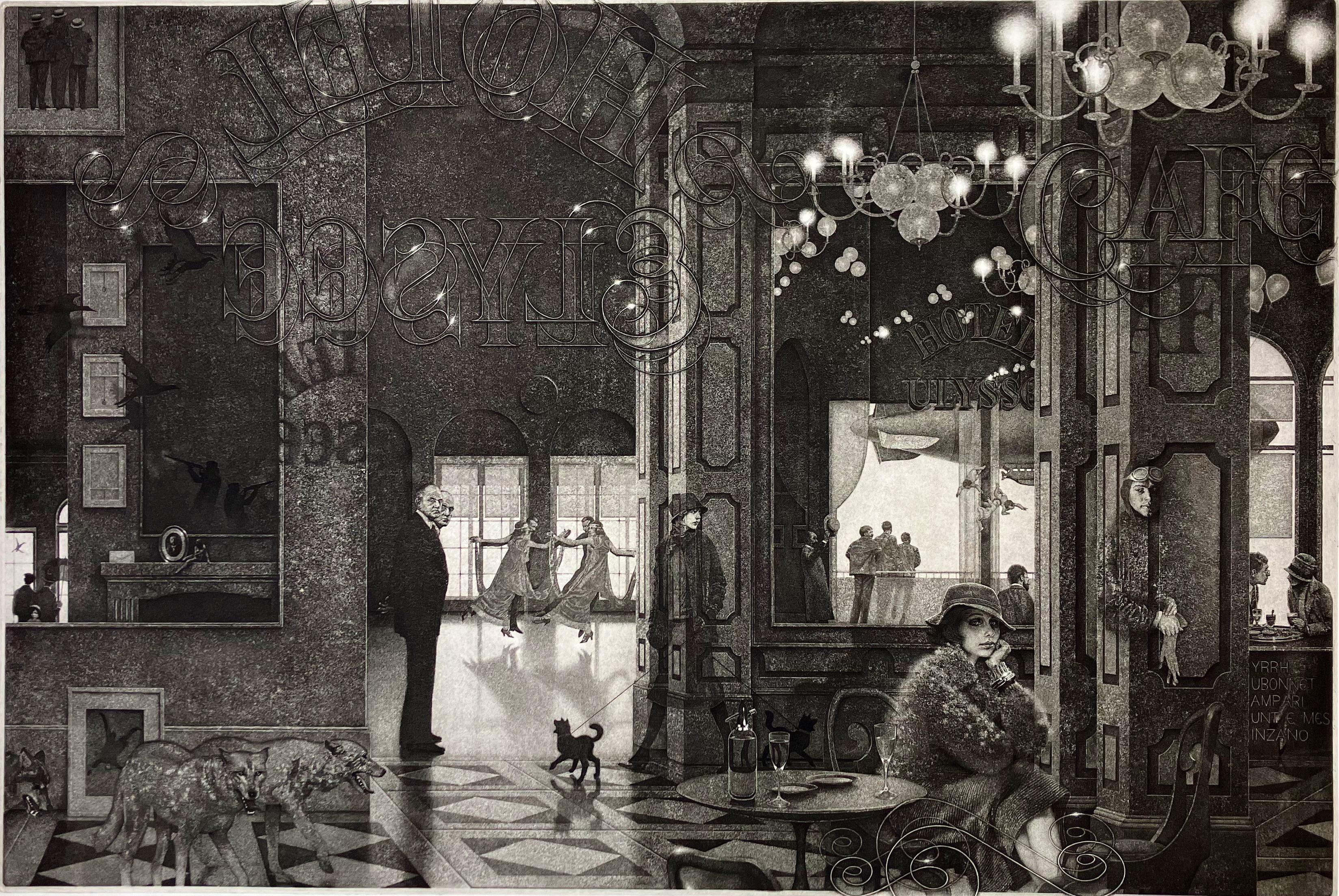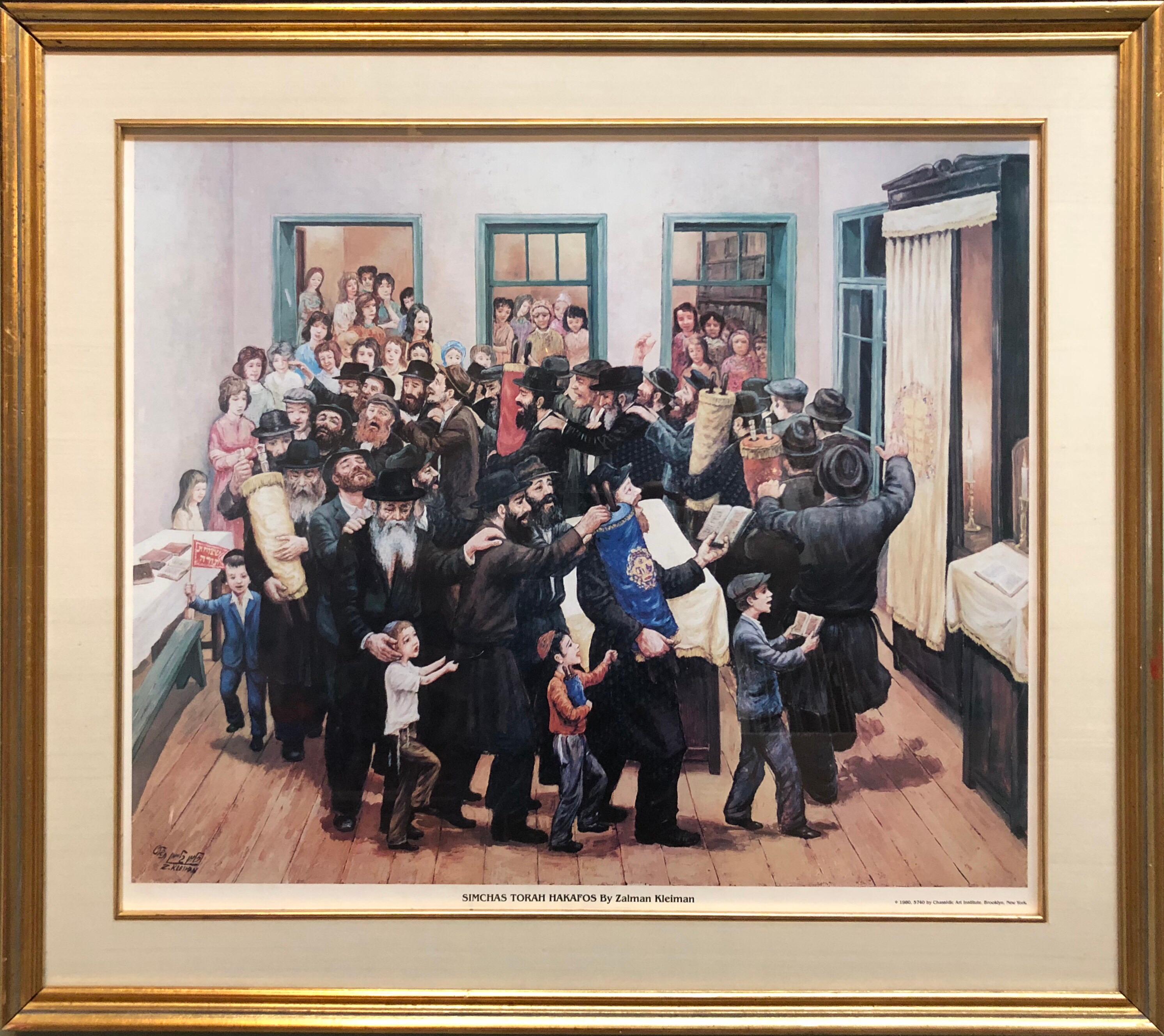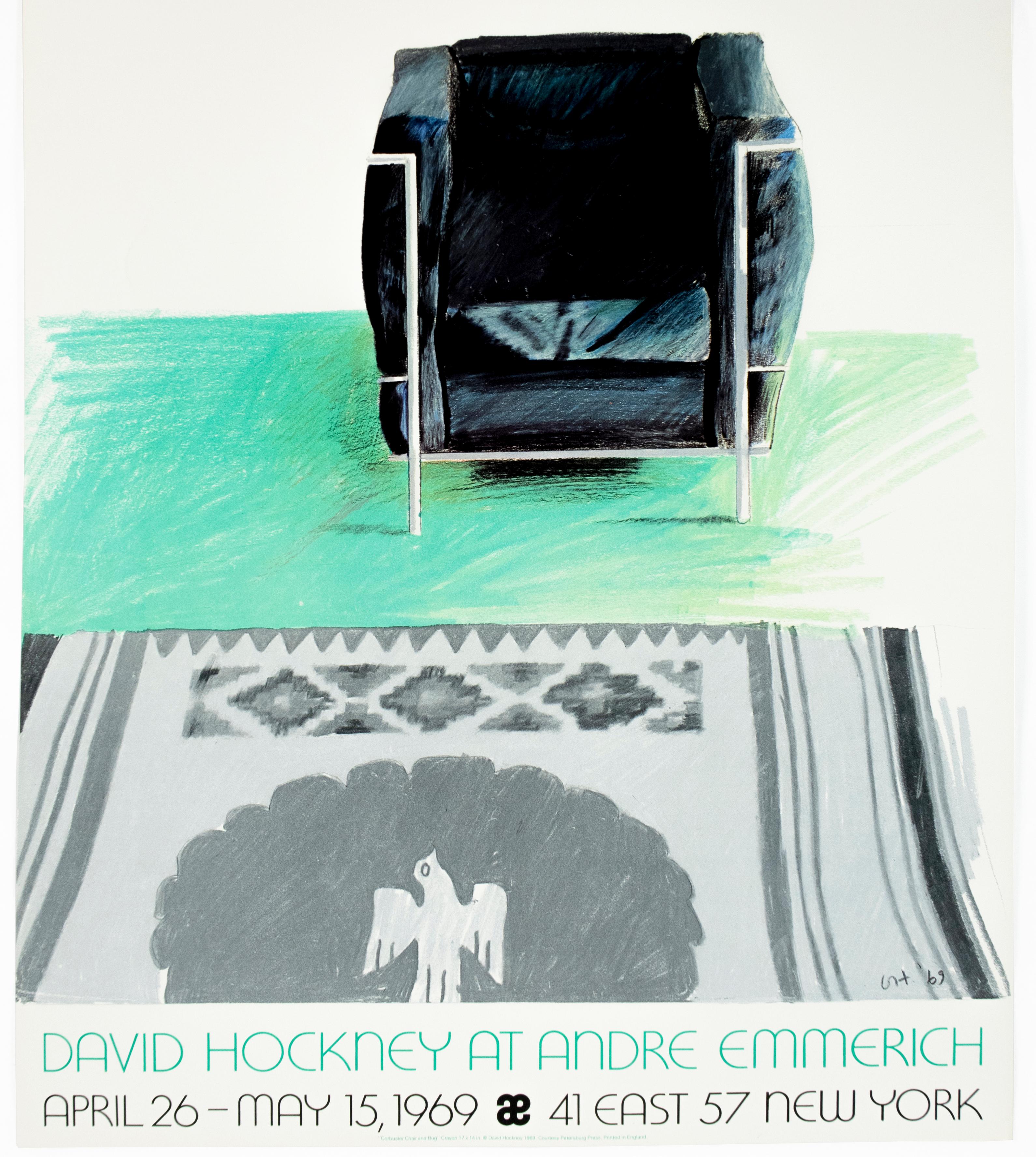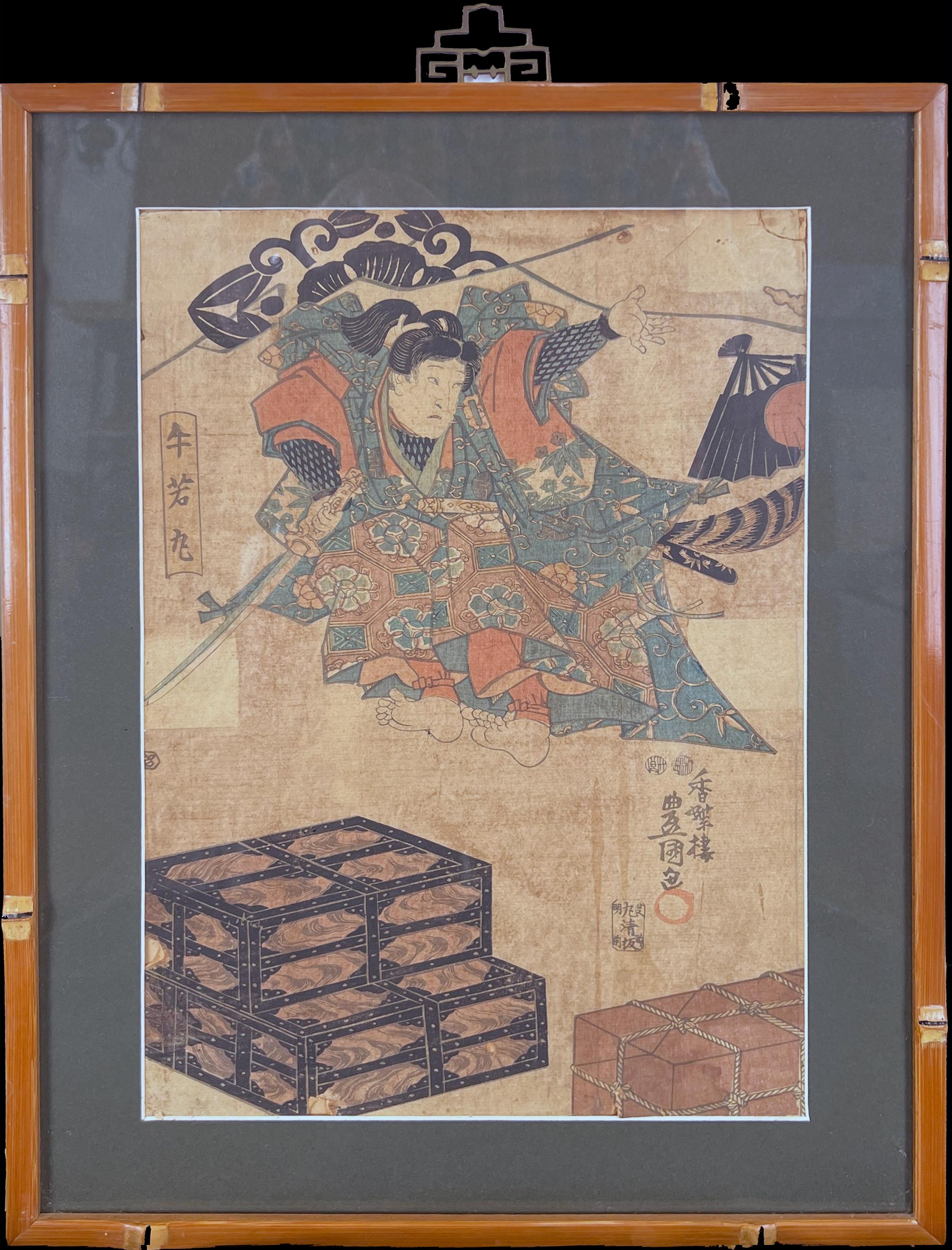Items Similar to "King of the Friendly Islands" (Tonga); Engraving from Captain Cook's 3rd Voyage
Want more images or videos?
Request additional images or videos from the seller
1 of 10
John Webber"King of the Friendly Islands" (Tonga); Engraving from Captain Cook's 3rd Voyage1784
1784
About the Item
"Poulaho, King of the Friendly Islands, Drinking Kava" is an engraving created by William Sharp (1749-1824), from a drawing by John Webber (1752-1793), who was the artist on Captain James Cook's 3rd and final voyage of discovery. It was published in the atlas of "A Voyage to the Pacific Ocean Undertaken by the Command of His Majesty, for Making Discoveries in the Northern Hemisphere", the official British Admirality sanctioned journal published upon completion of the voyage in London in 1784 by Strahan & Cadell.
Captain Cook visited Tonga on his 3rd voyage, which he named The Friendly Islands because of the warm welcome he and his crew received, unlike some of the other more hostile Pacific islands. The engraving depicts Cook and his men observed a kava ceremony at the village of Mu’a on Tongatapu. King Paulaho sits in the centre foreground, his back to the spectator with a man kneeling before him. The ceremonial mat depicted behind Paulaho indicates that nobody was allowed to sit behind him. The figure in the centre holds a single cup, referring to the Tongan custom of offering the cup to the king first. Kava is native to the islands of the South Pacific and was first described for English readers in 1768 by Captain James Cook. The kava root has been used for centuries as a central feature of ceremonies and celebrations because it was able to bring about a calming and pleasant social atmosphere. The root was crushed and processed into coconut milk to become the focal ceremonial beverage, simply referred to as kava.
This engraving is presented in a Koa wood frame and a white mat. Koa wood is legendary in Hawaii. There are occasional faint spots, but the print is otherwise in very good condition. This amazing Koa wood is native to Hawaii and it is known for the deep rich colors and varied grain pattern. Koa has an honored heritage in Hawaii and is highly revered and sacred. The word “koa” means “warrior” in Hawaiian. The warriors of King Kamehameha the Great, created canoes and weapons from a wood plentiful on the Big Island of Hawaii. This wood became synonymous with the warriors themselves, and it became known as koa.
There are three other engravings listed from the official journal of Captain Cook's 3rd voyage available that are presented in identical Koa wood frames and mats (LU117324682422, LU117324684052, LU117324684032). They would make a wonderful grouping for a display of 2, 3 or 4 prints. A discount is available for a grouping depending on the number of items included.
Captain Cook is remembered as one of the greatest explorers and navigators in history. His explorations included Australia, New Zealand and islands of the South Pacific and the northwest coast of North America. Hawaii was discovered by Captain Cook during this voyage. Hawaii was originally called The Sandwich Islands in honor of The Earl of Sandwich who, as head of the British Admiralty, authorized the funds necessary to finance the voyage. Captain Cook was killed by natives in Kealakekua Bay on the big island of Hawaii in 1779. His ships the Resolution and Discovery then returned to England. Other notables who were part of this expedition included Captain William Bligh, Cook's sailing master, who would later go down in history as captain of the mutinous crew of the Bounty and George Vancouver who would later explore and chart North America's northwestern Pacific Coast regions, including the coasts of Alaska, Washington, and Oregon, as well as the province of British Columbia in Canada. Vancouver Island and the city of Vancouver, British Columbia are named for him, as is Vancouver, Washington.
- Creator:John Webber (1751 - 1793, British)
- Creation Year:1784
- Dimensions:Height: 18.25 in (46.36 cm)Width: 23.5 in (59.69 cm)Depth: 0.88 in (2.24 cm)
- Medium:
- Movement & Style:
- Period:1780-1789
- Condition:
- Gallery Location:Alamo, CA
- Reference Number:
About the Seller
5.0
Vetted Seller
These experienced sellers undergo a comprehensive evaluation by our team of in-house experts.
Established in 2011
1stDibs seller since 2019
233 sales on 1stDibs
Typical response time: 1 hour
- ShippingRetrieving quote...Ships From: Alamo, CA
- Return PolicyA return for this item may be initiated within 7 days of delivery.
More From This SellerView All
- "Inspection Tour in the Wine Vaults", 1876 Philadelphia Centennial ExpositionLocated in Alamo, CAThis engraving is entitled "Philadelphia, PA- The Centennial Exposition - the Jury of Award on an Inspection Tour in the Wine Vaults of Agricultural Hall", ...Category
Late 19th Century Naturalistic Interior Prints
MaterialsEngraving
- Ancient Roman Marble Vase: 18th C. Piranesi Etching Vaso Cinerario di Gran MoleBy Giovanni Battista PiranesiLocated in Alamo, CA"Vaso Cinerario di Gran Mole. Le Teste dei Giovenchi mostrano di reggere it pesante Festone composto di Frutti Fiori Grans ed use. Il tuto Necefsario all Vita Umana. Il Restante degl...Category
1760s Old Masters Figurative Prints
MaterialsEtching
- Bow Street Office: Rowlandson Hand-colored Engraving from Microcosm of LondonBy Thomas RowlandsonLocated in Alamo, CAAn early 19th century print entitled "Bow Street Office", an illustration (Plate 11) from "The Microcosm of London", published in London in 1808 by R. Acker...Category
Early 1800s Other Art Style Interior Prints
MaterialsEtching, Aquatint
- 18th Century Etching of Ancient Roman Architectural Objects by Giovanni PiranesiBy Giovanni Battista PiranesiLocated in Alamo, CAA. Tigna Protensa Super Media Epistylia, B. Praecisiones Tigorum Quaqua Versus Extrinsectus Apparentium, C. Opae Extremitates Tigorum Contintes, Fig. I, plate 88 from "Vasi, Candelab...Category
Mid-18th Century Old Masters Figurative Prints
MaterialsEtching
- A Framed 18th C. Piranesi Etching of an Ancient Marble Vase from Hadrian's VillaBy Giovanni Battista PiranesiLocated in Alamo, CAThis large framed 18th century etching by Giovanni Battista Piranesi is entitled "Vaso antico di Marmo adornato di eccellenti Sculture si nella parte anteriere che nell' opposta, le ...Category
1770s Old Masters Figurative Prints
MaterialsEtching
- The Roman Colosseum: A Framed 18th Century Etching of the Interior by PiranesiBy Giovanni Battista PiranesiLocated in Alamo, CAThis large framed 18th century etching by Giovanni Battista Piranesi entitled "Veduta dell'interno dell'Anfiteatro Flavio detto il Colosseo" (View of the interior of the Flavian Amph...Category
1760s Old Masters Figurative Prints
MaterialsEtching
You May Also Like
- In a tavern. Paper, engraving, 21x25 cmBy Adriaen van OstadeLocated in Riga, LVIn a tavern. engraver Jan De Visscher (1933-1692) Paper, engraving, 21x25 cmCategory
17th Century Realist Figurative Prints
MaterialsPaper, Engraving
- G. Paterson "Dinner Party at a Mandarin's House" Engraving After T. Allom c.1840Located in San Francisco, CAG. Paterson "Dinner Party at a Mandarin's House" Original Engraving After T. Allom C.1840 Original engraving Dimensions 8" wide x 5" high The frame measures 20.5" wide x 18.5" hig...Category
Mid-19th Century Realist Interior Prints
MaterialsEngraving
- Interiors IV: Hotel Paradise CafeBy Peter MiltonLocated in San Francisco, CAArtist: Peter Milton (American, 1930-) Title: Interiors IV: Hotel Paradise Café Year: 1987 Medium: Resist-ground etching and engraving on copper Paper: BFK Rives Image size: 23.5 x ...Category
1980s Realist Interior Prints
MaterialsEtching, Paper
- Vintage 1980 Judaica Chassidic Poster Simchas Torah Hakafos Chabad ArtistBy Zalman KleinmanLocated in Surfside, FLVintage framed plate signed poster. Zalman Kleiman, Born in Leningrad, Russia in 1933 into a Lubavitcher Hasidic family, was a self taught Chassidic artist living in Crown Heights, ...Category
1970s Realist Figurative Prints
MaterialsOffset
- Vintage Le Corbusier '69 David Hockney Exhibition Poster Kilim southwest rugBy (after) David HockneyLocated in New York, NYShading in bright turquoise above a Southwestern style thunderbird Kilim rug adorns this original exhibition poster for David Hockney's 1969 show at Andre Emmerich, New York. This po...Category
1960s Realist Interior Prints
MaterialsLithograph
- Kumasaka Chōhan to Ushiwakamaru - One of a Diptych Original Woodcut PrintBy Utagawa Kunisada (Toyokuni III)Located in Soquel, CAKumasaka Chōhan to Ushiwakamaru is a Japanese Ukiyo-e print created between 1848 and 1854 by artist Utagawa Kunisada (Japanese, 1786-1864). The print is a Diptych, and is part of the...Category
1850s Realist Figurative Prints
MaterialsPrinter's Ink, Rice Paper, Woodcut




